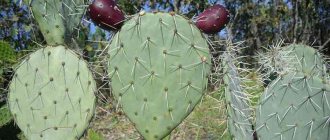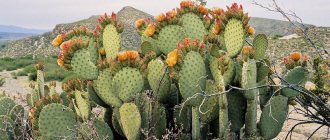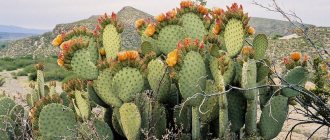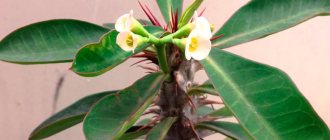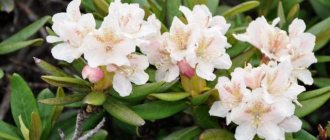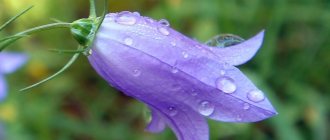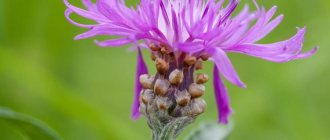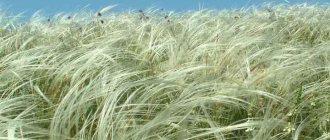The cactus has long ceased to be exotic in our area. What abilities are not attributed to him - from cleaning karma to protecting against harmful computer radiation. Different varieties, of course, look different, but they all have many similar features, such as sharp spines. Prickly pear stands out from its peers because the plant is more succulent.
Characteristics of the prickly pear cactus
Prickly Pear is a member of the Cactaceae family and is also known as Nopala, Tunita, Velvet Opuntia, Warm Hand, and Wooly Joint Prickly Pear. Grows in the United States, Mexico and South America. Later it will be brought to Africa, Australia and the Mediterranean.
This shrub is a xerophytic plant with good adaptation to semi-arid climatic conditions. Grows in fields and sandy soils. The native range for this cactus is low altitudes and mountain slopes.
Prickly pear fruits are actually the edible parts of the plant. This is one of the few varieties of cactus that is edible and has numerous medicinal properties. Its beautiful flowers and fruit make it a very attractive, drought-tolerant plant for any landscape, even indoors.
Use in cooking
Prickly pear is considered a delicacy, although there is hardly anyone in Europe who is ready to try a piece of cactus. Latin Americans love the delicacy and often use it in their national cuisine. In Mexico, prickly pear can be found in markets or stores.
Before cooking the cactus, you need to clean it well and remove all the seeds. The cactus tastes like a mixture of strawberries and pears. The taste is fresh and pleasant, the inside of the fruit is moderately sweet.
Branches are used to prepare unusual dishes. They are the juiciest. Prickly pear shoots are also considered edible. But only soft shoots can be used to prepare delicious dishes.
What can be prepared from the pulp:
- jam;
- jam;
- compote;
- sauce.
Original sorbet or even sweets are often prepared from the juice. If you add pieces of cooked cactus to milk, you will get a tasty and, most importantly, healthy dessert.
Refined alcohol is prepared from prickly pear. The liqueur is recognized as the most delicious. As for juice, it has many beneficial properties. These drinks are very popular in Spain and are topped with lime or lemon juice.
Plant
Prickly pear is considered a shrub or small tree, growing up to 2 - 4 m in height. It has been established that the cactus loves sunny, desert conditions and prefers well-drained, dry soil, mainly rocky soil closer to the slopes.
The cactus trunk is woody and round in cross-section. The stem segments are green, narrowly elliptical, obovate, 8 - 50 × 5 - 15 cm thick. The shape of the segments is complete, the base and apex are rounded. Areoles 2 mm in diameter, 2 - 3 cm apart.
Spines are usually absent, sometimes present 1 - 3 cm in the areola, expanding, grayish, needle-shaped, 3 - 9 mm; glochids are inconspicuous on early leaves. The leaves are conical 3 - 4 mm. Flowers are 1.3 - 1.5 cm in diameter, erect, red, yellow or purple.
Homeland and places of origin
North America, or more precisely Mexico, is considered to be the birthplace of Opuntia. Dry areas of deserts, savannas, juniper and pine forests “gave birth” to about half of all types of plants that are resistant to heat and sun. As navigation developed, the cactus spread across the territories of Canada, India, and Australia.
The coat of arms of Mexico depicts a golden eagle perched on a Prickly Pear, devouring a snake. According to legend, the ancient Aztecs founded their city of Tenochtitlan in the place where this action originated. The ancient sun god Huitzilopochtli ordered to build a city where they would see an eagle sitting on a cactus and devouring its prey. Currently, this place is the capital of Mexico, Mexico City. The image symbolizes the victory of good over evil.
Coat of arms of Mexico
Nutritional value
In addition to its refreshing taste, prickly pear is a good source of nutrients: vitamins, amino acids and minerals. One 86-gram serving of prickly pear offers 0.393 mg manganese, 141 mg calcium, 45 mg magnesium, 8 mg vitamin C, and 0.51 mg iron. In addition, many amino acids are 0.012 g tryptophan, 0.034 g threonine, 0.042 g isoleucine, 0.066 g leucine, 0.051 g lysine and 0.013 g methionine.
Spreading
Since the 1500s it was introduced to Europe, and now grows in Russia in the Caucasus, Turkmenistan and Crimea. The semi-desert climate of Australia was very popular with the neophyte Opuntia, which led to too high rates of its growth on the continent.
Neophyte - plants (usually weeds) that have recently appeared in the local flora as a result of human economic activity or natural migration.
Resistance to ten-degree frosts also affected survival, so chemical and biological methods of inhibiting growth and reproduction were used to curb the “expansion.” In addition to extremely dry climates, Opuntia can be found in the tropics and subtropics, particularly in North America and the Galapagos Islands.
Prickly Pear Cactus: Medicinal Properties and Health Benefits
Prickly pear is used for food production as well as in alternative medicine treatments, as it contains a huge amount of nutrients and therefore potential health benefits.
It is consumed immediately after removing the reliable, razor-sharp thorns. The fruits of raw cactus are ideal for making fruit salads and cocktails. This type of fruit is even used to make jams or other delicious dishes, even with chili. Let's take a closer look at the medicinal properties and unique health components found inside the prickly pear.
1) Strengthening the immune system
One serving of prickly pear is said to contain more than 1/3 of your total daily requirement of vitamin C.
Known ascorbic acid strengthens the immune system by stimulating the production of white blood cells and also acts as an antioxidant throughout the body. Vitamin C is necessary for the body to support various enzymatic and metabolic processes, including the creation of bone and muscle tissue.
2) Digestion
Cactus blades have a rather specific shape, they are very fibrous and contain a sufficient amount of dietary fiber. As we all know, dietary fiber is important for the digestive process because it is added to bowel movements, which then pass more easily through the smooth muscles of the gastrointestinal tract.
They also stimulate intestinal motility (all movements along the tract), and also reduce symptoms of diarrhea and constipation. Additionally, excess fiber in the body can actively reduce the amount of cholesterol, thereby protecting your heart health.
3) To build strong teeth and bones
Calcium is an essential part of the human diet, and prickly pear contains a significant amount of calcium in every serving. Calcium is involved in the creation of bone tissue in the body. In fact, 99% of the calcium in the body is found in bones and teeth.
By providing our bodies with enough calcium, we can prevent many dental problems, as well as age-related bone diseases such as osteoporosis.
4) To reduce excess weight
Several components found in prickly pear help you lose weight. Fiber aids digestion (your stomach feels full) and inhibits the release of ghrelin, a hunger hormone whose production, when reduced, reduces overeating and the feeling of hunger itself.
In addition, this plant is low in saturated fat and cholesterol, which means it is packed with metabolic potential. Therefore, the body functions at a higher level without gaining weight. The presence of vitamins B6, thiamine, riboflavin accelerates metabolic function, maximizes fat burning and conversion of food into usable energy.
5) Improved heart function
Prickly pear contains several components that are good for heart health. Therefore, the medicinal properties of prickly pear work even for the main organ of the body. The high fiber content in the fruit helps reduce the level of “bad” cholesterol in the body, while a sufficient amount of potassium helps lower blood pressure, relax blood vessels and, accordingly, reduce the load on the heart and the entire cardiovascular system.
Finally, the betalains found in prickly pear are directly linked to strengthening the endothelial walls of blood vessels, thereby reducing the likelihood of weakening or damage to the system. Betalains are a class of red or yellow indole-derived pigments that replace anthocyanins. As a result, lowering cholesterol levels, lowering blood pressure, and strengthening blood vessels can prevent the development of atherosclerosis, coronary heart disease and strokes.
6) Metabolic activity
The prickly pear cactus consists of a significant amount of minerals. It contains thiamine, riboflavin, niacin and vitamin B6 - all of which are vital components of cellular metabolism and normal, regulated enzyme function throughout the body.
If organ systems and hormonal balance are improved, the body will function more efficiently, which will consequently help increase weight loss, promote healthy muscle gain, and promote natural recovery from many illnesses.
7) Cancer prevention
Prickly pear contains flavonoids, polyphenols and betalains, all of which act as antioxidant compounds and help neutralize free radicals before they cause healthy cells to mutate into cancerous ones.
Research has shown that the chances of cancer are reduced in people who frequently add these types of antioxidants to their diet. Prickly pear cactus is considered one of the most beneficial foods for overcoming cancer as it contains ample antioxidants.
For a restful sleep
Prickly pear contains magnesium, which is a beneficial mineral for promoting a sense of sleep in people suffering from insomnia, long-term anxiety or restlessness. It causes the release of serotonin in the body, which leads to an increase in melatonin levels. It also has a somewhat sedative effect, which means it reduces nerve function and calms the body, helping you fall asleep.
9) For ulcers
The cactus is traditionally used to treat stomach ulcers. Apparently, the sticky substance and fibrous material that is present in prickly pear helps inhibit the development of stomach ulcers, especially those that develop due to excessive alcohol consumption. So people who regularly suffer from this painful condition should add just a little of the plant's fruits to their diet to significantly improve their quality of life!
10) For diabetes
Extracts from prickly pear cactus leaves are powerful regulators of glucose levels in the body. For patients with type 2 diabetes, the extract may cause a reduction in the post-meal glucose spike, making diabetes management much easier. Regular consumption of prickly pear is recommended to reduce the likelihood of developing diabetes.
11) For beautiful skin
The phytochemicals and antioxidants in prickly pear provide a good defense mechanism against premature signs of aging such as wrinkles and age spots. Free radicals left behind by cellular metabolism can negatively impact your skin, but eating prickly pear will keep your skin looking healthy, youthful, and fresh.
Prickly pear in food:
- The fruits and green leaves are edible.
- The fruits are eaten fresh or processed into drinks, fruit salads, etc., as with Indian prickly pear.
- Fruits are best added to candies, jellies, juice or wine.
- The tender young pads, or cladodes, are known as "Nopalitos Verdes."
- They are commonly eaten fresh or cooked as green vegetables in Mexico and the United States.
- Prickly pear cactus omelettes are common in the southwestern United States.
- Tender leaves or pads from the cactus, called Nopales, are often added to boiled or fried vegetable dishes, especially in Mexican cuisine.
Other traditional uses and benefits of prickly pear to extract all its medicinal properties:
- Cactus pads are heated and placed on the chest of patients, especially when the whole body is cooling.
- It is widely used externally to treat cuts, insect bites, sunburn and chapping.
- Cooked pads help reduce sugar levels.
- Cactus pads are used to reduce inflammation and relieve various stomach problems.
- The cactus has been used as a known hangover remedy for hundreds of years to relieve headaches associated with too much alcohol.
Other interesting facts:
- The plant is used as a food plant for cochineal insects.
- Red dye is then industrially produced from these insects.
- The dye is used to naturally color foods, soft drinks and many cosmetics such as lipsticks.
- Stem segments (spacers or cladodes) made from Nopalea cochenillifera are used as food, feed and poultices.
- The cactus is also planted as an ornamental plant.
- Prickly pear is even used to make very effective waterproof house paint.
- The juice from the stocks has long been considered an effective mosquito repellent in central Africa.
- Pads are often fed to dairy cows in Northern Mexico to add a unique and sweet flavor to their milk.
Side effects and warnings:
- The prickly pear cactus is safe when eaten in acceptable quantities. Prickly pear is typical of Mexican as well as Southwestern American cuisine.
- Major side effects associated with excessive consumption of prickly pear include mild diarrhea, nausea, stomach fullness, headache, and increased stool volume and frequency.
- It must be used with caution in patients with diabetes or even hypoglycemia (low blood sugar), high cholesterol, low blood pressure, or even thyroid disorders.
- It is not safe for people with rhinitis or even asthma to consume the cactus, as the fruit may worsen symptoms.
- Patients with immunosuppression should avoid prickly pear because the plant may control defense mechanisms.
- In patients with reduced liver function, cactus worsens liver condition.
- The cactus is simply not recommended for pregnant or even breastfeeding women due to insufficient scientific research.
- Prickly pear pad gel may alter the absorption of various medications. Do not use prickly pear within 2 hours before using other medications.
- If harvested incorrectly, there is a risk of damage and dermatitis, so always use gloves when picking all parts of the plant, not just the fruit.
- Carefully review all prescription drugs and supplements you take to ensure cactus fruit is compatible with your consumption.
What does the prickly variety look like?
Prickly pear is a cactus, which is not strange - the appearance gives everything away. The succulent branches, which are abundant on a massive green base, are the main distinguishing feature. The crop grows in height up to 4 and 6 m. The main thing is that there are suitable conditions.
The cactus, oddly enough, is quite popular. It is grown for decorative purposes, but again only in suitable conditions. Another feature is that the plant can be eaten, although few people in Europe know about it. Unusual use is common in the homeland of prickly pear in South America and certain regions of Greece.
Not everyone knows, but many cacti are poisonous. Not lethal, but not useful either, especially for children. In this regard, prickly pear has left its relatives behind. The culture can and even should in some cases be used in cooking or as part of a complex treatment.
What is noteworthy is that all parts of the crop, from flowers to stems, are used in cooking. The birthplace of culture is Greece. It got its name from the city where it grows.
Other names for the unusual prickly plant:
- nopal;
- Indian rice;
- mother-in-law's tongue;
- fig.
The so-called fig grows in South America.
prickly pear fruit
The fruit of the crop has an oval shape. The average size is from 5 to 8 cm. The peel is uneven, as if covered in warts. The color of the peel may depend on the variety and degree of ripeness. Typically, the surface of the fruit becomes green, yellow and pink upon ripening, much less often red. The peel itself is moderately thick and is not eaten. Inside the pulp has a different, not so bright color.
Be sure to read:
Mangosteen is a tropical fruit from South East Asia.
The taste of the fruit is not bad. The main note is sweetness with a slight sourness. The pulp is often compared to the pulp of a ripe melon. What’s interesting is that if fruit juice gets on your clothes, you won’t be able to wash the clothes. The taste of the fruit is often compared to melon, pear or even cucumber.
Prickly pear seeds are not edible. They are never eaten. Despite the fact that the skin is not harmful, removing it is also not particularly pleasant. To protect your hands from the peel, use special gloves to avoid serious injury.
Attention, Spikes!
As a protective function, a large number of glochidia grow on the spiny areoles (like many incomprehensible words in one sentence... definitions below). They are difficult to remove from human skin; tweezers are used to remove them. Cold water tightens the skin, which also helps in getting rid of “thorns.”
Areole - a bud or bud of a branch, pubescent or smooth, a distinctive feature of cacti. May grow into a branch, baby or flower. Due to electromagnetic interaction, the hairs on the areolas can attract droplets of water from the surface of the cactus.
Glochidia is a single-celled growth on the buds up to 10 mm long, which is a mini spine with serrations in the upper part. They are easily separated from the trunk or branch of a cactus, dig into the skin and are difficult to remove from there, causing pain. They have a protective function in cacti.
A little history
The red cactus was first bred by the Japanese biologist Watanabi. Taking a Gymnocolicium seedling with red spots (such a small mutation is not uncommon among cacti), I cut out a red areola and grafted it onto an Echinopsis cactus (an areola is a specific formation in a cactus, containing spines and hairs, and suitable for rooting and grafting). I again took the areola with redness from the grown cactus and again grafted it onto a green cactus.
After repeating this procedure many times, he managed to get a completely red cactus grafted onto a green, unpretentious echinopsis. The red caps of Gymnocalyciums created a real sensation among cactus growers and at first were incredibly expensive.
Planting a seedling after purchase
A seedling can be grown in two main ways: at an angle of 45 degrees and with the formation of a horizontal cordon. In the first case, bending down the branches in front of the shelter is easier. In the second case, the seedling is planted vertically, its top is cut off. Side shoots bend to the ground.
Planting figs
The shoots are arranged like sleeves directed in different directions. They form buds from which branches grow. The fig harvest ripens on them.
What is needed for planting
For planting, a hole is dug about one and a half meters long, about a meter wide and up to 80 cm deep. Great depth is not needed, because the roots of this plant branch horizontally.
The top layer of soil must be folded separately, it is then poured into the hole. One and a half buckets of humus (it can be replaced with compost), 200 grams, is placed at its bottom. superphosphate and the same amount of potassium fertilizer. Then a small layer of fertile soil is poured.
A mound is formed in the hole on which the roots of the seedling are distributed. They are covered with earth, compacted and watered abundantly.
The plant is planted in open soil around the beginning of May, when the threat of night frosts has finally passed.
Optimal place
First you need to choose the warmest place in the garden that is protected from cold winds. A trench is dug if several plants need to be planted at once.
Healing cactus oil
In addition to internal use, external use of Opuntia stems can also be beneficial. After removing the spines, they are cut into plates and applied to various parts of the body.
Oil is also made from the seeds of the plant by cold pressing. In Mexico, Chile or Peru it can be purchased almost everywhere; in our country you can find it in online stores. It contains oleic, inolenic and stearic fatty acids, vitamins A and E, due to which it has regenerating, anti-inflammatory, rejuvenating, and analgesic properties. Prickly pear cactus oil is rubbed into the skin:
- it has an analgesic effect for rheumatism;
- Opuntia oil for the face has a rejuvenating effect, it can be added to night cream and applied daily to improve skin condition;
- It is useful to use Opuntia oil on the face for teenagers suffering from acne;
- Prickly pear oil can be rubbed into the scalp to reduce hair loss;
- For women, Opuntia oil for the face can be used as a means to prevent wrinkles and improve skin tone.
You can also make your own prickly pear cactus oil from the stems of the plant. They are crushed and mixed with olive oil (in equal parts). The mixture is placed in a dark place and left for a week, after which it is filtered. Of course, the healing properties of homemade oil will not be as pronounced, but it retains many of the beneficial substances present in the stems of Opuntia.
Tip: before using Prickly Pear oil on your face, test the product on an inconspicuous area of skin to avoid allergic reactions.
